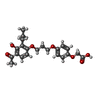Entry Database : PDB / ID : 3d5fTitle Crystal Structure of PPAR-delta complex Peroxisome proliferator-activated receptor delta Keywords / / / / / / / / / Function / homology Function Domain/homology Component
/ / / / / / / / / / / / / / / / / / / / / / / / / / / / / / / / / / / / / / / / / / / / / / / / / / / / / / / / / / / / / / / / / / / / / / / / / / / / / / / / / / / / / / / / / / / / / / / / / / / / / / / / / / / / / / / / / / / / Biological species Homo sapiens (human)Method / / / Resolution : 2.2 Å Authors Amano, Y. Journal : to be published Title : PPAR-Delta Activation Contributes to Neuroprotectio Against Thapsigargin-Induced SH-SY5Y Cell DeathAuthors : Iwashita, A. / Mihara, K. / Amano, Y. / Orita, M. / Matsuoka, N. History Deposition May 16, 2008 Deposition site / Processing site Revision 1.0 Jun 3, 2008 Provider / Type Revision 1.1 Jul 13, 2011 Group Revision 1.2 Nov 10, 2021 Group / Derived calculations / Category / struct_ref_seq_dif / struct_siteItem _database_2.pdbx_DOI / _database_2.pdbx_database_accession ... _database_2.pdbx_DOI / _database_2.pdbx_database_accession / _struct_ref_seq_dif.details / _struct_site.pdbx_auth_asym_id / _struct_site.pdbx_auth_comp_id / _struct_site.pdbx_auth_seq_id Revision 1.3 Nov 1, 2023 Group / Refinement descriptionCategory / chem_comp_bond / pdbx_initial_refinement_model
Show all Show less
 Open data
Open data Basic information
Basic information Components
Components Keywords
Keywords Function and homology information
Function and homology information Homo sapiens (human)
Homo sapiens (human) X-RAY DIFFRACTION /
X-RAY DIFFRACTION /  SYNCHROTRON /
SYNCHROTRON /  MOLECULAR REPLACEMENT / Resolution: 2.2 Å
MOLECULAR REPLACEMENT / Resolution: 2.2 Å  Authors
Authors Citation
Citation Journal: to be published
Journal: to be published Structure visualization
Structure visualization Molmil
Molmil Jmol/JSmol
Jmol/JSmol Downloads & links
Downloads & links Download
Download 3d5f.cif.gz
3d5f.cif.gz PDBx/mmCIF format
PDBx/mmCIF format pdb3d5f.ent.gz
pdb3d5f.ent.gz PDB format
PDB format 3d5f.json.gz
3d5f.json.gz PDBx/mmJSON format
PDBx/mmJSON format Other downloads
Other downloads 3d5f_validation.pdf.gz
3d5f_validation.pdf.gz wwPDB validaton report
wwPDB validaton report 3d5f_full_validation.pdf.gz
3d5f_full_validation.pdf.gz 3d5f_validation.xml.gz
3d5f_validation.xml.gz 3d5f_validation.cif.gz
3d5f_validation.cif.gz https://data.pdbj.org/pub/pdb/validation_reports/d5/3d5f
https://data.pdbj.org/pub/pdb/validation_reports/d5/3d5f ftp://data.pdbj.org/pub/pdb/validation_reports/d5/3d5f
ftp://data.pdbj.org/pub/pdb/validation_reports/d5/3d5f
 Links
Links Assembly
Assembly
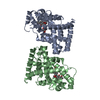
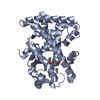
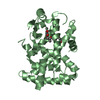
 Components
Components Homo sapiens (human) / Plasmid: pET28 / Production host:
Homo sapiens (human) / Plasmid: pET28 / Production host: 
 X-RAY DIFFRACTION / Number of used crystals: 1
X-RAY DIFFRACTION / Number of used crystals: 1  Sample preparation
Sample preparation SYNCHROTRON / Site:
SYNCHROTRON / Site:  SPring-8
SPring-8  / Beamline: BL32B2 / Wavelength: 1 Å
/ Beamline: BL32B2 / Wavelength: 1 Å Processing
Processing MOLECULAR REPLACEMENT
MOLECULAR REPLACEMENT Movie
Movie Controller
Controller





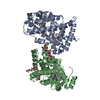
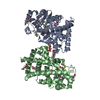
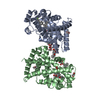
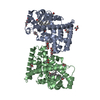

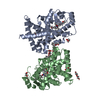
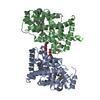
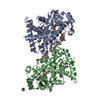
 PDBj
PDBj
